Haiti through their eyes: Powerful photos show realities faced by young people in Port-au-Prince
A youth group in Haiti has shown the reality of living alongside conflict in a powerful photo exhibition.

Read our 2023 annual report

Knowledge Hub
A crisis that began over fuel shortages in 2018 has spiralled into the deadliest year in recent history for Haitians, the near-collapse of basic services, and half of the country in need of humanitarian assistance. Here are five things you need to know in 2025.
The lowest-income country in the western hemisphere, Haiti has faced decades of emergencies, both man-made and natural. However, a crisis that began with fuel shortages in 2018 has led to political turmoil, a surge in violence, the deadliest year in the country’s recent history, and fully half of the population in need of humanitarian assistance.
Despite the increased needs, humanitarian funding has lagged in recent years, creating even more dire circumstances. Here’s what you need to know about the crisis in Haiti in 2025.
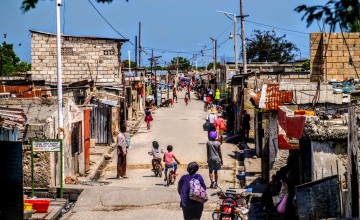
The roots of the current crisis in Haiti can be traced back to March of 2018, when Venezuela stopped exporting oil to the country. That summer, the Haitian government halted fuel subsidies, leading to price increases as high as 50% and violent — at times deadly — protests that continued into the following year. By September 2019, the country went into lockdown, a period of 10 weeks that led to a deteriorating security situation, blocked access for humanitarian groups, and increasing levels of hunger.
The following year, President Jovenel Moïse was assassinated in his own home, setting off a political crisis that dovetailed with the rise of armed group warfare, particularly in the capital city of Port-au-Prince (including the city’s low-income commune, Cité Soleil). In 2023, the last of Haiti’s democratically-elected officials left office, creating a vacuum for more violence across the country.
“Everybody is traumatised and we are seeing increased numbers of people being forced to flee their homes — often bringing nothing with them — to escape the fighting,” said Concern Haiti Country Director Kwanli Kladstrup at the beginning of 2024.
Last year marked the most violent and deadliest in recent history for Haiti, with the International Organisation for Migration estimating over 5,300 casualties and 700,000 Haitians displaced by the violence. “What we are witnessing is a full-blown security, protection and hunger crisis,” added Kladstrup in the final weeks of the year.
“Everybody is traumatised and we are seeing increased numbers of people being forced to flee their homes — often bringing nothing with them — to escape the fighting.”
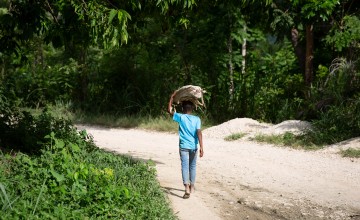
The impact of this crisis relies in part on the prevalence of poverty in Haiti. A 2023 overview from UNICEF estimates that nearly 59% of the population lives below the poverty line.
These circumstances have been perpetuated by centuries of debt and crisis, going back to when Haiti gained independence from France in 1804 after three centuries as a slave colony. The price of freedom was steep: The country’s farmable land and infrastructure were all but destroyed by over a decade of war. Moreover, Haiti was forced to pay reparations to France in exchange for diplomatic recognition, in what today’s dollar amount would be roughly equivalent to €23 billion. Haiti paid these reparations to France between 1825 and 1947, taking out high-interest loans from American, German, and French banks to cover the cost (approximately 80% of its annual national budget).
This cycle of debt put Haiti in a vulnerable context with regards to politics and leadership, and left everyday Haitians shouldering much of the financial burdens, passing on poverty from one generation to the next. In 2019, Kladstrup explained that “the majority of Haiti — especially young people — continue to be marginalised, feel disenfranchised with no education or economic prospects, and live in poor conditions with limited access to basic social services and economic opportunity.”
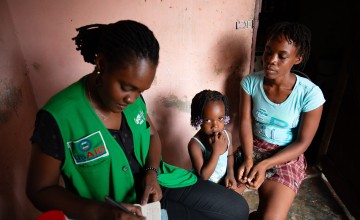
Hunger in Haiti is a crisis in and of itself. 5.4 million people — roughly one out of every two Haitians — are facing acute levels of food insecurity, and approximately 6,000 are facing famine-like conditions.
This is also a crisis that’s been in the making for years, impacted in part by internal factors, but also aided by external ones. As recently as the 1980s, the country was largely self-sufficient with food — particularly rice. However, aggressive American trade policies from the 1990s left nearly half of the food being consumed in Haiti — including 80% of rice and all cooking oils — coming from imports. Tariffs protecting farmers in Haiti were slashed, and the influx of American rice imports devastated the country’s agricultural sector.
Today, Haiti remains one of the hungriest countries in the world, driven in large part by inflation. One 2020 World Food Programme report estimated that the average Haitian spent 35% of their income on one meal — the equivalent of a Dubliner paying roughly €50 for the ingredients to make a simple lunch.
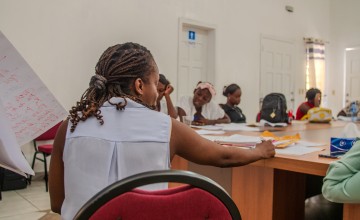
Both conflict and hunger deeply impact the lives of women in Haiti. Currently, women have either no or limited mobility, with many unable to leave their neighbourhoods lest they expose themselves to gender-based violence (GBV) and abuse.
“The cycle and level of violence over the past year has led to increases in sexual and gender-based violence,” notes Kladstrup. Between January and October 2023, cases of rape in the country increased by 49% compared to the same period in 2022. This trend continued in 2024, with reported incidents of overall GBV up 40% compared to the first six months of 2023. Women and girls also make up the majority of the 362,000 people who have been displaced by the violence.
This is particularly important as women play a vital role in Haitian food systems, particularly the Madan Saras (also known as Madame Saras). These female traders form the backbone of local food markets, getting supplies and produce across the country from rural farmers to urban consumers.
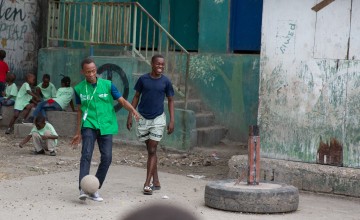
Looting, arson, and other attacks over the past few years have continued to erode conditions for Haitians across the country. These attacks have targeted houses as well as infrastructure, including water, sanitation, and healthcare. Last year, 45% of the country lacked access to clean and safe water. Clinics and hospitals have also been recent targets, leaving less than 40% of health facilities in Port-au-Prince functioning. Medicine, blood, and other essentials have also become scarce due to overwhelming need against debilitating blockades. Another earthquake or hurricane could be catastrophic in these conditions.
While all of these deteriorating conditions carry a tremendous impact, above all what we’re seeing in Haiti is a deterioration of social ties. Communities have been torn apart by displacement and destruction, and families are now sharing territories without a sense of belonging or ownership of space, as Concern Haiti team members have warned. Without a safety net or state support, millions of Haitians are being forced to face their situations alone. Suffering the cumulative effects of the last three years alone is an added insult to injury, and one that is pushing many people to the brink of desperation.
Despite the prevalence of violence, Concern Haiti’s Kwanli Kladstrup believes that peace is achievable — and necessary: “Prevention of future violence, and sustained support for the most vulnerable — especially children — should be our guiding principles to ensure the next generation does not pursue violence as its only option. The potentially violent actors of tomorrow are the children of today. Therefore, it is most important that their rights to education, good health, and protection are fulfilled; and right now that is just not happening.”
Concern has been in Haiti since 1994, when we responded to Hurricane Gordon. Since then, we have responded to every major emergency to impact the country over the last 31 years.
This includes the current crisis in Haiti. In early 2024, we escalated our emergency response in the country to meet increasing needs. Our work includes survivor-centred psychosocial support to people who have experienced gender-based violence and approaches to preventing, mitigating, and responding to future abuse and harm. Our youth-focused work has also helped to foster a sense of solidarity among young people in conflicting neighbourhoods to come together in promoting nonviolent leadership. Programmes like Manje Pi Byen are in place to address the hunger crisis while supporting local markets.
From these larger projects to more immediate cash transfers and other distributions, our work in Haiti revolves around community trust and acceptance, including a sense of community ownership over each of our programmes. While we address the needs of the moment, we also want to ensure that the social ties that have been severed by crisis are repaired for the long term.